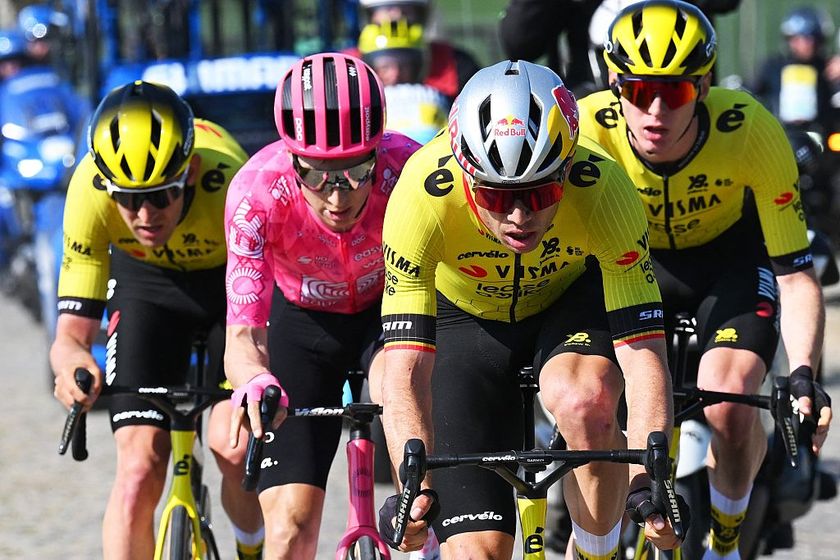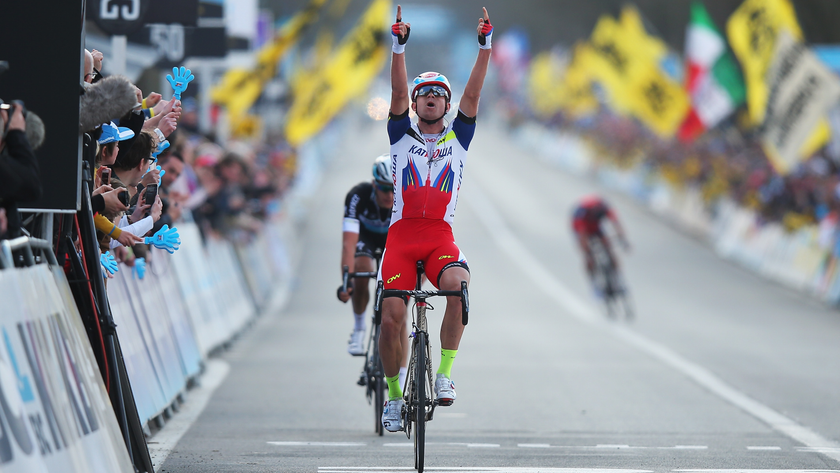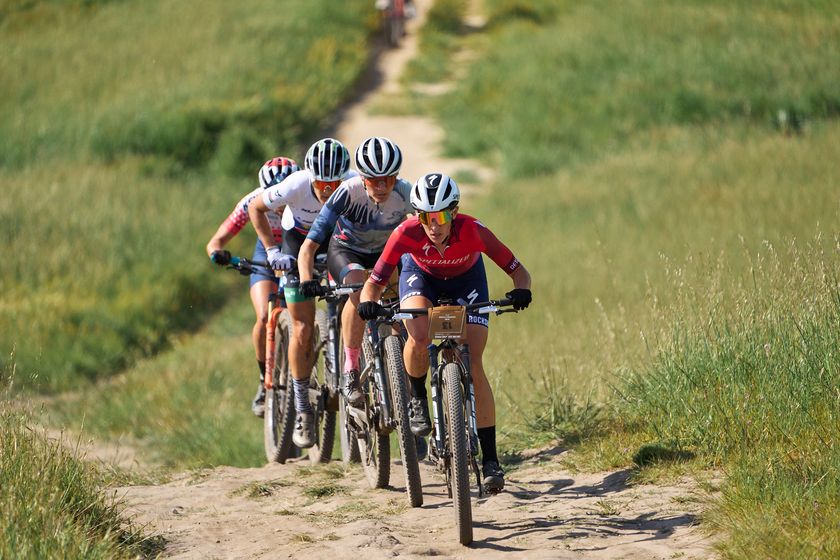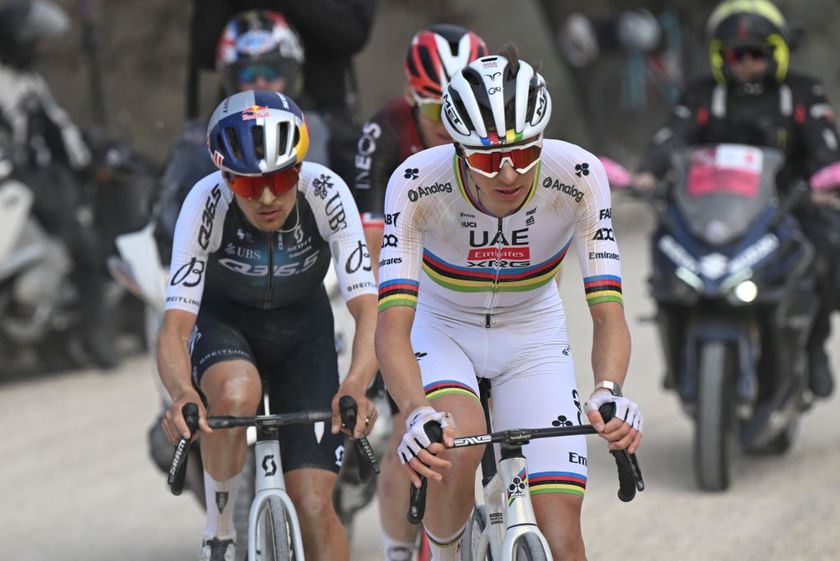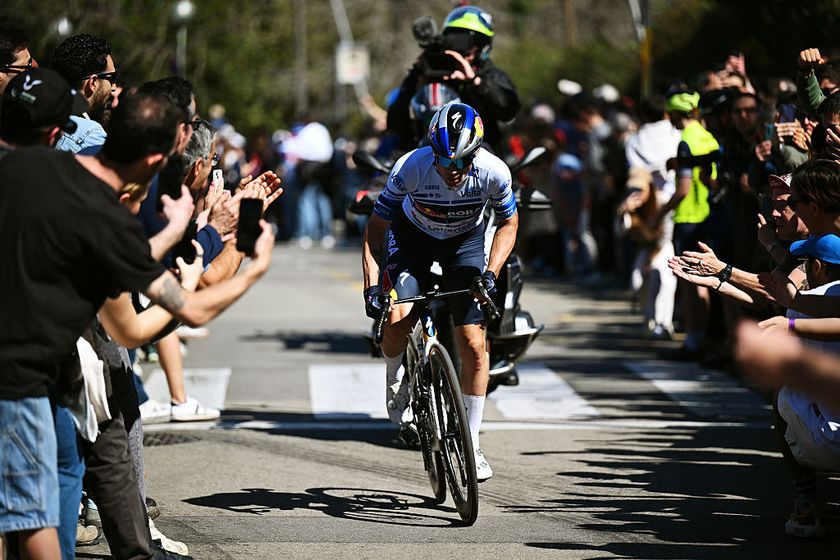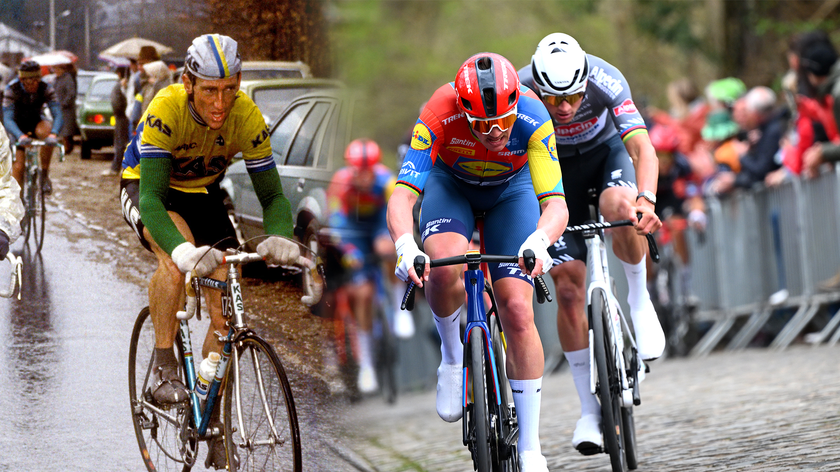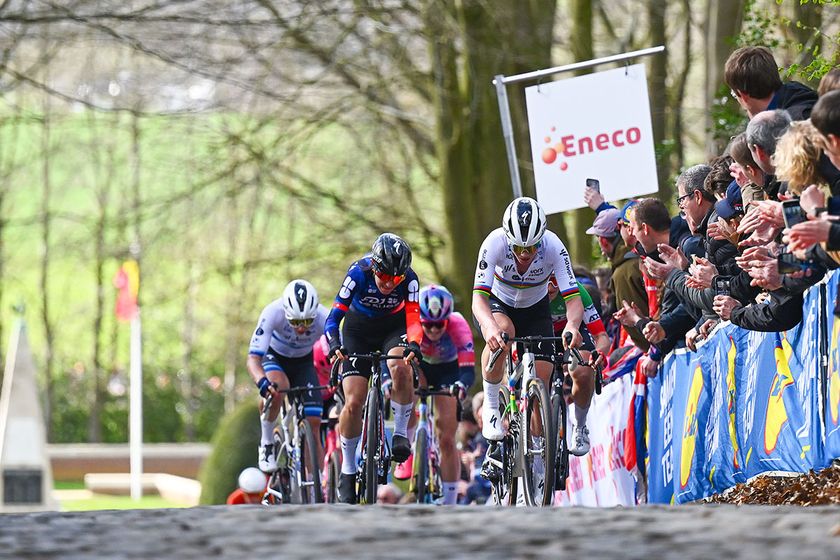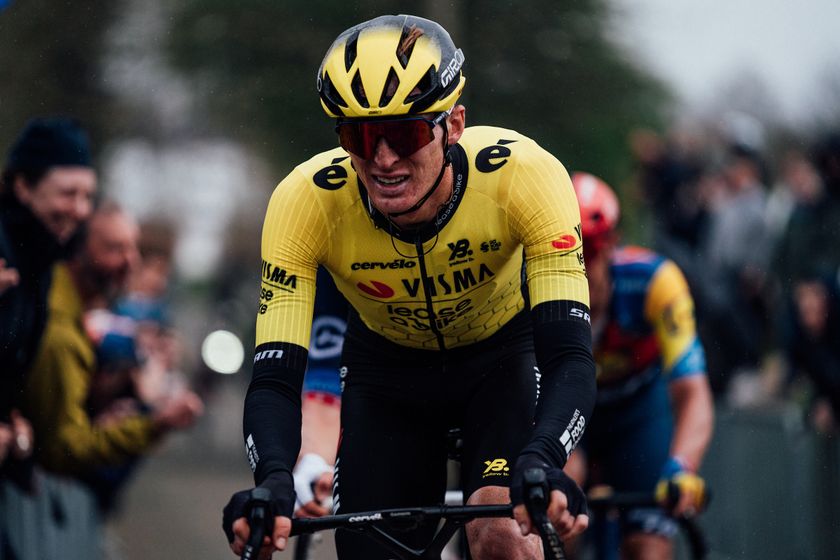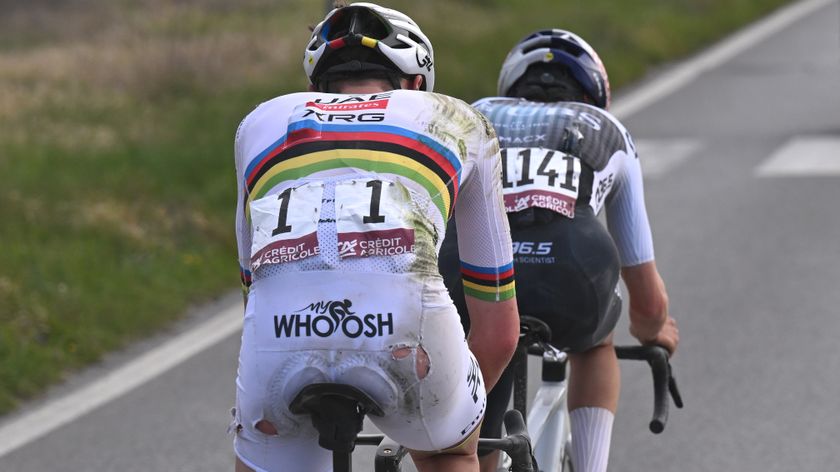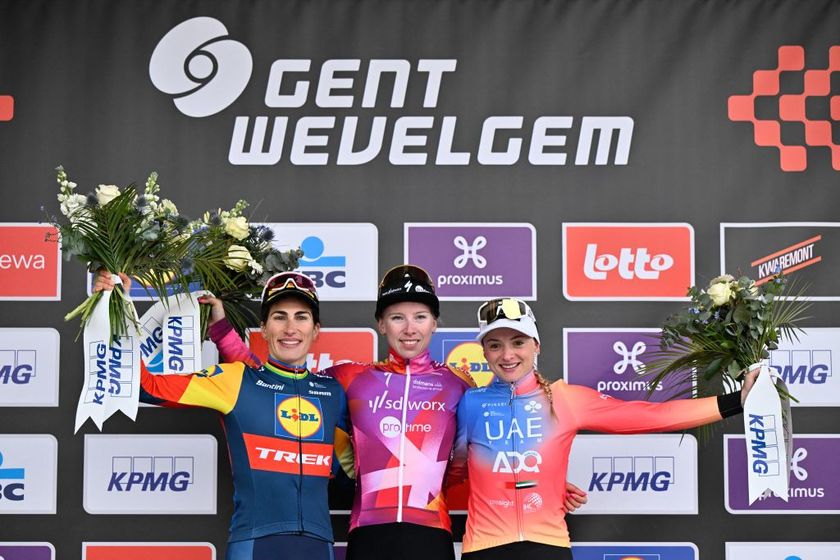Fitness questions and answers for March 6, 2006
Got a question about fitness, training, recovery from injury or a related subject? Drop us a line at...
Form & Fitness Q & A
Got a question about fitness, training, recovery from injury or a related subject? Drop us a line at fitness@cyclingnews.com. Please include as much information about yourself as possible, including your age, sex, and type of racing or riding. Due to the volume of questions we receive, we regret that we are unable to answer them all.
Carrie Cheadle, MA (www.carriecheadle.com) is a Sports Psychology consultant who has dedicated her career to helping athletes of all ages and abilities perform to their potential. Carrie specialises in working with cyclists, in disciplines ranging from track racing to mountain biking. She holds a bachelors degree in Psychology from Sonoma State University as well as a masters degree in Sport Psychology from John F. Kennedy University.
Dave Palese (www.davepalese.com) is a USA Cycling licensed coach and masters' class road racer with 16 years' race experience. He coaches racers and riders of all abilities from his home in southern Maine, USA, where he lives with his wife Sheryl, daughter Molly, and two cats, Miranda and Mu-Mu.
Kelby Bethards, MD received a Bachelor of Science in Electrical Engineering from Iowa State University (1994) before obtaining an M.D. from the University of Iowa College of Medicine in 2000. Has been a racing cyclist 'on and off' for 20 years, and when time allows, he races Cat 3 and 35+. He is a team physician for two local Ft Collins, CO, teams, and currently works Family Practice in multiple settings: rural, urgent care, inpatient and the like.
Fiona Lockhart (www.trainright.com) is a USA Cycling Expert Coach, and holds certifications from USA Weightlifting (Sports Performance Coach), the National Strength and Conditioning Association (Certified Strength and Conditioning Coach), and the National Academy for Sports Nutrition (Primary Sports Nutritionist). She is the Sports Science Editor for Carmichael Training Systems, and has been working in the strength and conditioning and endurance sports fields for over 10 years; she's also a competitive mountain biker.
Eddie Monnier (www.velo-fit.com) is a USA Cycling certified Elite Coach and a Category II racer. He holds undergraduate degrees in anthropology (with departmental honors) and philosophy from Emory University and an MBA from The Wharton School of Business.
Eddie is a proponent of training with power. He coaches cyclists (track, road and mountain bike) of all abilities and with wide ranging goals (with and without power meters). He uses internet tools to coach riders from any geography.
Get The Leadout Newsletter
The latest race content, interviews, features, reviews and expert buying guides, direct to your inbox!
David Fleckenstein, MPT (www.physiopt.com) is a physical therapist practicing in Boise, ID. His clients have included World and U.S. champions, Olympic athletes and numerous professional athletes. He received his B.S. in Biology/Genetics from Penn State and his Master's degree in Physical Therapy from Emory University. He specializes in manual medicine treatment and specific retraining of spine and joint stabilization musculature. He is a former Cat I road racer and Expert mountain biker.
Since 1986 Steve Hogg (www.cyclefitcentre.com) has owned and operated Pedal Pushers, a cycle shop specialising in rider positioning and custom bicycles. In that time he has positioned riders from all cycling disciplines and of all levels of ability with every concievable cycling problem.They include World and National champions at one end of the performance spectrum to amputees and people with disabilities at the other end.
Current riders that Steve has positioned include Davitamon-Lotto's Nick Gates, Discovery's Hayden Roulston, National Road Series champion, Jessica Ridder and National and State Time Trial champion, Peter Milostic.
Pamela Hinton has a bachelor's degree in Molecular Biology and a doctoral degree in Nutritional Sciences, both from the University of Wisconsin-Madison. She did postdoctoral training at Cornell University and is now an assistant professor of Nutritional Sciences at the University of Missouri-Columbia where she studies the effects of iron deficiency on adaptations to endurance training and the consequences of exercise-associated changes in menstrual function on bone health.
Pam was an All-American in track while at the UW. She started cycling competitively in 2003 and is the defending Missouri State Road Champion. Pam writes a nutrition column for Giana Roberge's Team Speed Queen Newsletter.
Dario Fredrick (www.wholeathlete.com) is an exercise physiologist and head coach for Whole Athlete™. He is a former category 1 & semi-pro MTB racer. Dario holds a masters degree in exercise science and a bachelors in sport psychology.
Scott Saifer (www.wenzelcoaching.com) has a Masters Degree in exercise physiology and sports psychology and has personally coached over 300 athletes of all levels in his 10 years of coaching with Wenzel Coaching.
Kendra Wenzel (www.wenzelcoaching.com) is a head coach with Wenzel Coaching with 17 years of racing and coaching experience and is coauthor of the book Bike Racing 101.
Steve Owens (www.coloradopremiertraining.com) is a USA Cycling certified coach, exercise physiologist and owner of Colorado Premier Training. Steve has worked with both the United States Olympic Committee and Guatemalan Olympic Committee as an Exercise Physiologist. He holds a B.S. in Exercise & Sports Science and currently works with multiple national champions, professionals and World Cup level cyclists.
Through his highly customized online training format, Steve and his handpicked team of coaches at Colorado Premier Training work with cyclists and multisport athletes around the world.
Brett Aitken (www.cycle2max.com) is a Sydney Olympic gold medalist. Born in Adelaide, Australia in 1971, Brett got into cycling through the cult sport of cycle speedway before crossing over into road and track racing. Since winning Olympic gold in the Madison with Scott McGrory, Brett has been working on his coaching business and his www.cycle2max.com website.
Richard Stern (www.cyclecoach.com) is Head Coach of Richard Stern Training, a Level 3 Coach with the Association of British Cycling Coaches, a Sports Scientist, and a writer. He has been professionally coaching cyclists and triathletes since 1998 at all levels from professional to recreational. He is a leading expert in coaching with power output and all power meters. Richard has been a competitive cyclist for 20 years
Andy Bloomer (www.cyclecoach.com) is an Associate Coach and sport scientist with Richard Stern Training. He is a member of the Association of British Cycling Coaches (ABCC) and a member of the British Association of Sport and Exercise Sciences (BASES). In his role as Exercise Physiologist at Staffordshire University Sports Performance Centre, he has conducted physiological testing and offered training and coaching advice to athletes from all sports for the past 4 years. Andy has been a competitive cyclist for many years.
Michael Smartt (www.cyclecoach.com) is an Associate Coach with Richard Stern Training. He holds a Masters degree in exercise physiology and is USA Cycling Expert Coach. Michael has been a competitive cyclist for over 10 years and has experience coaching road and off-road cyclists, triathletes and Paralympians.
Kim Morrow (www.elitefitcoach.com) has competed as a Professional Cyclist and Triathlete, is a certified USA Cycling Elite Coach, a 4-time U.S. Masters National Road Race Champion, and a Fitness Professional.
Her coaching group, eliteFITcoach, is based out of the Southeastern United States, although they coach athletes across North America. Kim also owns MyEnduranceCoach.com, a resource for cyclists, multisport athletes & endurance coaches around the globe, specializing in helping cycling and multisport athletes find a coach.
Leg length problems Knee pain Patellofemoral maltracking Saddle pain Q Factor on SPD-SL pedals Antibiotics and training Hips and LLD Riding for weight loss
Leg length problems
Hi,
I have had a bio-mechanical problem and would like your opinion if possible. In a nutshell my right leg moves inwards then outwards on the upstroke. I have had both legs measured and have had different results, as it is difficult to pinpoint reference points any part of the pelvis. With my index finger placed on the anterior-superior region of each side of the pelvis the right side seems lower, however when I am lying supine and have a measurement taken, the difference seems negligible? Have built up my right shoe and am using a crank length difference of 2.5mm. What do you think the problem is?
Kieran
Kieran,
Knee pain
I have a question about knee pain. The pain started during a century ride in January which I was not properly conditioned for and shouldn't have attempted in the first place. It began as stinging pain on the medial-anterior surface of both patellas. With rest and Anti-inflammatory meds I seemed to recover quickly. I have had no more pain in the right knee but if I ride 20 miles or more the pain returns to the left knee only. What puzzles me is that when I stand up on the pedals the pain immediately goes away. I have checked my bike fit numerous times and I have been careful about cadence and not pushing hard in big gears. Your thoughts and suggestions are very welcome.
Tim Hammond
Tim,
Patellofemoral maltracking
Hi there,
I have been a competitive road cyclist and triathlete since my late teens (now 28) and am trying to get back to cycling after almost a two year lay off due to injury. The injury in my right knee occurred during a long hilly ride over a weekend (105 miles on the Friday with no problem), returned same route on the Sunday and developed a soreness in the centre of my right knee under the kneecap around 40-50 miles from home. Unfortunately I had no choice but to continue riding and took several breaks to stretch. The pain was quite discomforting by the end of the ride and hurt whilst going up stairs. After 2 weeks rest the discomfort disappeared. I then took 6 weeks with no cycling/running and returned to the bike to find I developed the same anterior pain under the patellar after approx 20-30 minutes. Before the onset of pain, I found a tightening in the right hamstring and when I stand out of the saddle to stretch I feel a tightness in the back of the knee. As soon as I get off the bike the pain disappears and I can walk/run with no discomfort.
After the first year of repeated attempts at recovery with no success I started physio treatment which I've now had for a year. After the first month of flexibility/manipulation I was able to extend my cycling to 40-50 minutes before knee pain. Since then I started strength work and more recently core strength including regular stretching, however, my ability to cycle without knee pain is back down to 15-20 minutes.
I took my bike and turbo to a sports/orthopaedic physician who concluded that the bike was well set up and the look cleats have good lateral movement. When fatigue begins there is a tendency for the right knee to drift towards the frame. At this point when I sit up and cycle I feel soreness just above the knee cap, like something is hooking the tendon tight on each downward pedal stroke. It was also noticed that the toes on my right foot grip the floor when doing a single leg squat on right leg. The specialist found nothing evident in the modified Thomas and Ober's test to point to tensor fascia lata, itb or rectus femoris but noted that my pain is around the superior medial aspect of the patella. He noticed I have a very slight inward squinting of the right knee and right foot (and slight pronation). In addition to this, a knee ultrasound found everything to be normal apart from a small amount of fluid when knee is flexed suggesting a minor abnormality in patellofemoral area. There is also a slight thickiening of the femoral insertion on the lateral collateral. The good thing is that at least the physios and specialist have the same opinion that my problem is maltracking related.
I have followed the advice to strengthen external hip rotators, VMO and hamstrings and kept the stretching going, especially as both specialist and physio found my right hip to be less flexible and a reduction in balance from the pelvic region. Since then my core strength has improved and my right foot appears normal (like the left) when doing a one legged squat. Other areas of weakness are that my right abductor is tight, left hamstring is slightly tighter due to more focus on right leg stretching, and both glutes are noticeably tight so I need to regularly work on these.
When doing strength work my right hamstring seems considerably weaker, and I have pain in the back of the knee when performing hamstring curls or isolated hamstring bridges with a Swiss ball. This pain tends to last for a day or two afterwards and I find it is hampering my progress although I have used ice and anti-inflammatories. My most recent bike session on the turbo trainer (with 2 LeWedges in my right shoe for the first time) showed the same early symptoms where the discomfort started in the superior medial part of the patella, especially so when I take hands of the bike and pedal sitting upright. I stopped quickly before onset of pain and iced my knee.
A final comment is that over the last couple of weeks I have had a feeling of inflammation or fluid in the same area as above probably due to irritation from exercises. It is more noticeable when sitting at the office desk for long periods with 90 degree knee angle so I feel I need to keep the right leg stretched out. I also find that if I clamp my right foot whilst sitting and try to bring my knee upwards I get a discomfort in the back of my knee where the hamstrings insert. Oddly, I was pain/inflammation free whilst on holiday for 2.5 weeks last month when I did quite lot of walking in the mountains.
Do you have any advice on what might be happening here with the inflammation/irritation and advice on my injury in general? Any opinions are very welcome!
On a final note, well done on a great Q&A section, it provides excellent reading and has proven a good source for ideas to help with my injuries. Keep up the good work!
Rich Hurley
Bristol, England
Richard,
Saddle pain
Hello,
On Cyclingnews and your own site I have been reading your thoughts about bike positioning - the ways to fit your bike and positioning solutions to many problems. I tried many ways to sit on my bike to improve pedal efficiency, comfort, weight distribution and aerodynamics. Now I have a huge problem: whatever saddle position I use, there is always pain involved at the contact points between me and the saddle.
Height:
A higher position (powerful, but…) my pelvis rotates forward which sometimes brings pain when riding at higher intensities on the soft areas and the sit bones. Having the saddle more forward to be on the wider part of the saddle is not a solution as there's still a stab of pain in the genital area sometimes. With a lower position I am really sitting on the saddle experiencing no pain in the genital area anymore and still powerful.
Fore/aft:
When I remove my hands from the bars, I do not fall forward and can maintain the position (now the bar is a centimetre higher and rotated so the hoods and drops are more easy to reach)
I get pain, and I'm not comfortable when pedalling when my saddle is more backwards, and later, I get swelling at the place where the bone is on the saddle on both sides (not the saddle sore place but a little more forward - I had this during last summer because of the seams in one of my shorts).
I put the saddle a little bit more to the back (so I am more on the smaller part). It seemed to ease the pain. I do not know if that is the solution, but it was already too late. I rode the last part standing. I can't ride until it has healed. Just at the moment my morale was good because I was noticing results of my training.
What is the problem now? Maybe the saddle is too wide or too far forward and the wider part of the saddle is in contact with the femur - hip joint, and I have to sit on the smaller part to prevent that. I have a Flite saddle.
Jan Denayer
Steve Hogg replies
Jan,
Q Factor on SPD-SL pedals
Hello Cyclingnews
I am a 46-year-old male fitness-road-rider
I have late model SPD-SL Shimano Ultegra pedals, cleats and Shimano road shoes (R151, black/silver with carbon sole).
I am looking for any rules of thumb/guidance as far as positioning my cleats with regards to Q-size. My pedals allow a few mm (2-3) of sideways movement either way and I am trying to figure out which way to position them. The reason for my question is that I noticed that my left leg naturally wants to "go out wide" a bit more than my right leg (else my left VMO starts to hurt a little bit under load) but the right one seems to be more or less in the centre of the pedal, so I wonder if this situation irregular and my body is telling me something. I am a left hander/footer and a flat-footed, if it makes any difference.
Yuri Budilov
Melbourne, Australia
Yuri,
Antibiotics and training
Hi, I am a 37 year old cyclist.
I train about 15 hours a week, including about 2 hours weight room the rest is on the bike. About 6 months ago I underwent surgery for the second time on my nose in order to get rid of recurring sinus infections. This included several antibiotic cures before and after. Because the sinusitis didn't pass I got new cure today for three months of antibiotics. Are there any guidelines or restrictions on training with antibiotics ?
Dave Duvekot
Dave,
Dave Duvekot then responded:
Dr Bethards,
The antibiotics are 10 days Oflodex (ofloxacin 200 mg) twice a day and three months of Resprim forte (800 mg sulphamethoxazole and 160 mg trimethoprim) one tablet a day. This medication is given for recurring sinus infections, after having had surgery twice. The last time six months ago.
Dave Duvekot
Dave,
Hips and LLD
Steve,
I've noticed in many of your helpful answers lately, you've mentioned if distance between the inner thighs at the seat post is different on one side or the other it may cause problems. But, isn't it natural for the gap to be bigger on the right because of the chainrings?
Jason Warner
Belleville, IL, USA
Jason,
Jason Warner then responded:
Steve,
Your advise it wonderful! Thank you again. Your recent advice has focused on rotated hips and LLD, and I seem to have similar issues. But, my problem seems to be different from people you've recently helped. My left hip rotates forward while I'm on the trainer; however, my left leg seems to have the smoother stroke compared to the right while the left knee is closer to the top tube. Here's the difference, when I have my wife compare the length of my legs while sitting or lying down, my right is about three to five millimetres shorter. I may be reading your advice wrong, but it seems my hip rotation would mean my left leg should be shorter, correct? My varus on both feet has been measured, and I'm using shims on both feet to correct it. Any advice you could give would be greatly appreciated!
Jason Warner
Jason,
Jason Warner then responded:
Steve,
I've followed your suggestion and rotated my saddle slightly to the left. I've ridden about 200 miles like this, and it seems to help quite nicely. I do feel my left hip moving forward every now and then, so I have to rotate it on the seat some to get back in place. My right leg pedals a little smoother, but I have slight movement on the top of the stroke. But, overall, much better. Thank you much! Would you now suggest a pack up my right cleat a bit?
Jason Warner
Jason,
Riding for weight loss
My partner and I have just purchased a bicycle each to exercise and lose weight. How long each day should you bicycle ride to help you lose weight? 30 mins, etc, and does it have to be very hard riding?
Gail McGaw
Gail,
